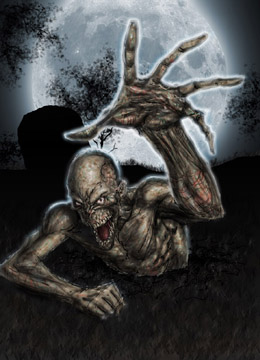Specialists find scientific explanation to phenomenon of living dead
Humans believe in the possibility to bring the dead back from their graves, although the eerie perspective evokes nothing but fear
According to classic science, it is absolutely impossible for a dead person to return to the world of the living. It is generally believed that a human being will not be able to resurrect if he or she remains in the state of clinical death for more than three or five minutes, or dies from severe physical injuries. The destruction or decomposition of the human body ceases all vital processes, which distinguish the living matter from what is usually referred to as remnants. The latter, scientists say, cannot move, see, hear, produce any sounds or perform any other functions of a living body. 
However, there can be several exceptions from this rule. There were incidents registered in medical practice, when beheaded bodies of executed people would raise to their feet and even make a few steps. One of such incidents occurred in the beginning of the 15th century in Germany, during a public execution of a sea pirate, known as Steterbreker.
A truck ran over a woman in the beginning of the 1980s in the city of Kharkov, Ukraine. The blow was strong, but the woman stood up and started walking, although she fell down again soon. Doctors said that the woman suffered numerous joint fractures and muscle ruptures. The woman was alive, although she was not supposed to make any movement after suffering such severe physical damages.
One may say that humans believe in the possibility to bring the dead back from their graves. However, people are highly scared of such a perspective. The most ancient fact of this necrophobia is dated to the 9th millennium B.C. Archeologists uncovered an ancient grave in Bulgaria. The person was lying in the grave with his face down. Furthermore, large stones were resting on the body, as if they were placed so not to let the person climb out of the grave. Archeologists believed that someone did not want the dead man to see the light again.
Specialists usually refer to such findings as vampire graves: corpses are either speared, beheaded or placed under large boulders. The last grave of the ilk was discovered several decades ago.
According to Christian religion, the deceased can resurrect only at God's will. If it is true, there is no need to be afraid of the dead. Quite on the contrary, it may indicate a person's holiness. However, 99.99 percent of people shudder at the thought that they might see the living dead in real life.
The number of horror stories about cemeteries is enormous. It is noteworthy that some people sincerely believe in what those stories say. The fear of the living dead subconsciously exists in almost every human being. It could be compared to women's fear of mice: it is extremely hard to explain the nature of the apprehension.
British specialists came across the sickness of the “living dead,” when they were studying the nature of Ebola fever. Symptoms of the disease bear some resemblance to an episode from a classic horror film. After several hours of feverishness, a patient suffers either syncope or a coma, which can often be taken for the state of death. After that, the patient revives, lapses into aggressive state and tries to bite every moving object, whether it is a human being or an animal. The sickness provokes abundant salivation and internal haemorrhage. Saliva and blood falling from patient's mouth create a rather hideous picture in combination with unusual complexion and dull eyes of a sick person.
Bats and wolves often carry rabies in wild nature. These animals, therefore, can often be found in fairytales about werewolves and vampires. Needless to say that our ancestors perceived such patients as something paranormal and highly horrible.
Subscribe to Pravda.Ru Telegram channel, Facebook, RSS!





